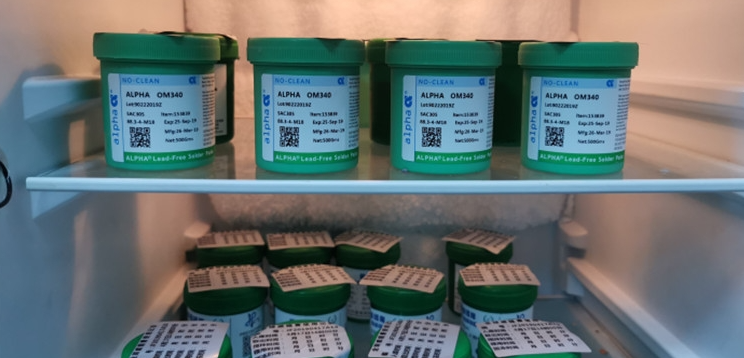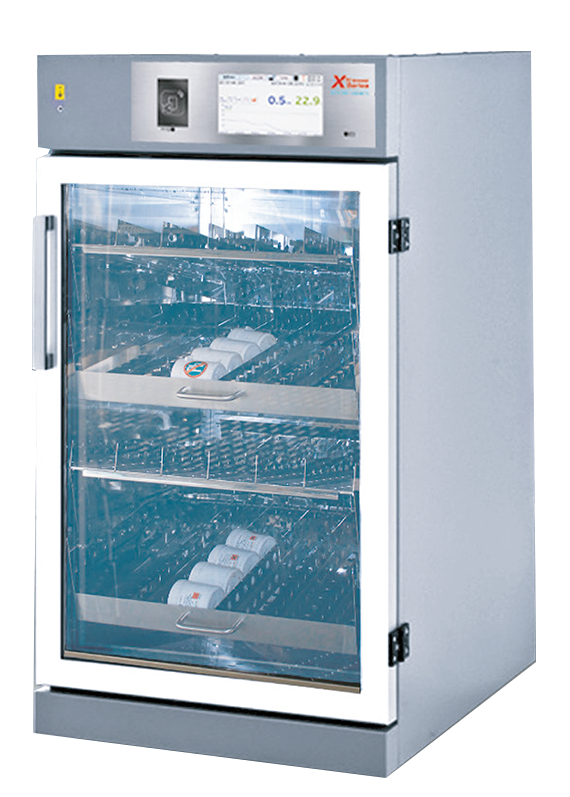If you're looking for the best ways to store and handle solder paste to ensure its quality and performance, you've come to the right place. Proper solder paste storage temperature, handling procedures, and refrigeration can significantly extend its shelf life and maintain its effectiveness during PCB assembly. In short, store solder paste at 2-10°C (35-50°F) in a sealed container, use a first-in-first-out (FIFO) system, and allow it to reach room temperature before use to avoid condensation issues. In this detailed guide, we'll dive into the specifics of solder paste shelf life, refrigeration, thawing practices, and more to help you achieve optimal results in your electronics manufacturing process.
Why Proper Solder Paste Storage and Handling Matter
Solder paste is a critical material in surface mount technology (SMT) for PCB assembly. It combines tiny metal alloy particles with flux, creating a mixture that forms strong, reliable connections between components and the board. However, solder paste is sensitive to environmental conditions like temperature and humidity. If not stored or handled correctly, it can degrade, leading to poor soldering results, weak joints, or even complete assembly failures.
Improper storage can cause the flux to separate from the metal particles, reducing the paste's ability to adhere to surfaces. Exposure to high temperatures can accelerate chemical reactions within the paste, shortening its shelf life. By following best practices for solder paste storage temperature and handling procedures, you can avoid these issues, save costs, and ensure consistent performance in your projects.

Understanding Solder Paste Shelf Life
Solder paste shelf life refers to the period during which the paste remains usable under recommended storage conditions. Most manufacturers specify a shelf life of 6 to 12 months when stored at the ideal temperature of 2-10°C (35-50°F). However, this duration can vary depending on the specific formulation of the paste and whether it is kept at room temperature for extended periods.
At room temperature (around 20-25°C or 68-77°F), the shelf life of solder paste can drop significantly, sometimes to just 1 month. This is because higher temperatures speed up the chemical degradation of the flux, which affects the paste's viscosity and soldering performance. Always check the manufacturer's guidelines for the exact shelf life of your specific product, as some formulations are more stable than others.
To maximize solder paste shelf life, store it in a refrigerator immediately upon receipt and avoid frequent temperature fluctuations. Keeping a log of storage dates and using a FIFO system ensures that older batches are used first, reducing the risk of expired paste.
Optimal Solder Paste Storage Temperature
The recommended solder paste storage temperature is between 2°C and 10°C (35°F to 50°F). This low-temperature range slows down the chemical reactions within the paste, preserving its properties over time. Storing solder paste in a refrigerator at this temperature range is a standard practice in electronics manufacturing to extend its usability.
It's crucial to avoid freezing the paste, as temperatures below 0°C (32°F) can cause the components to separate or form crystals, rendering the paste unusable. Similarly, storing it above 10°C for long periods can accelerate degradation. Use a dedicated refrigerator with a reliable temperature control system to maintain consistency, and avoid placing the paste near the fridge door where temperature fluctuations are more common.

Solder Paste Refrigeration: Dos and Don’ts
Solder paste refrigeration is a key factor in maintaining its quality, but there are specific guidelines to follow to avoid common pitfalls. Here's a breakdown of the dos and don'ts:
- Do: Store solder paste in an airtight container or the original packaging to prevent moisture absorption and oxidation.
- Do: Label containers with the date of receipt and batch number to track shelf life effectively.
- Do: Use a refrigerator dedicated to solder paste storage to avoid contamination from food or other materials.
- Don't: Store solder paste in a freezer, as freezing temperatures can damage its composition.
- Don't: Return opened or partially used solder paste to the refrigerator after it has been at room temperature for an extended period, as condensation can form and affect its quality.
Following these solder paste refrigeration practices ensures that the paste remains in optimal condition until you're ready to use it. Consistency in storage conditions is key to avoiding performance issues during assembly.
Best Practices for Solder Paste Handling Procedures
Proper solder paste handling procedures are just as important as storage. Mishandling can introduce contaminants, cause temperature shocks, or lead to inconsistent application. Below are some essential tips to follow during handling:
- Transport Carefully: When moving solder paste from storage to the workspace, minimize exposure to room temperature. Use insulated containers if transport takes longer than a few minutes.
- Avoid Contamination: Always use clean tools and gloves when handling solder paste. Contaminants like dust or oil can interfere with soldering performance.
- Stir Before Use: If the paste has been sitting for a while, gently stir it to ensure uniformity. Avoid excessive mixing, as it can introduce air bubbles that affect application.
- Limit Room Temperature Exposure: Only remove the amount of paste needed for immediate use. Prolonged exposure to room temperature can degrade the paste, even within a single workday.
By adhering to these solder paste handling procedures, you can maintain the integrity of the paste from storage to application, ensuring consistent results in your PCB assembly process.

Solder Paste Thawing: How to Do It Right
Before using refrigerated solder paste, it must be brought to room temperature through a controlled thawing process. Improper solder paste thawing can lead to condensation forming on the paste, which introduces moisture and compromises its performance. Follow these best practices for safe and effective thawing:
- Plan Ahead: Remove the solder paste from the refrigerator 4-8 hours before use, depending on the container size and manufacturer recommendations. Larger containers may require more time to reach room temperature.
- Avoid Rapid Heating: Never use a microwave, oven, or hot water bath to speed up thawing. These methods can cause uneven heating and damage the paste's composition.
- Keep It Sealed: Leave the container sealed during thawing to prevent moisture from condensing on the paste. Only open it once it has fully reached room temperature.
- Check Temperature: Use a thermometer to confirm that the paste is at room temperature (around 20-25°C or 68-77°F) before use. Some manufacturers provide temperature indicator strips on their packaging for convenience.
Proper solder paste thawing ensures that the material is ready for application without risking quality degradation. Rushing this step can lead to soldering defects like poor wetting or inconsistent deposits during stencil printing.
Common Mistakes to Avoid in Solder Paste Storage and Handling
Even with the best intentions, mistakes in solder paste storage and handling can occur. Here are some common errors and how to avoid them:
- Storing at Room Temperature for Too Long: Leaving solder paste out of refrigeration for extended periods reduces its shelf life. Always return unused paste to the fridge promptly if it hasn’t been opened or exposed for long.
- Ignoring FIFO Practices: Failing to use older batches first can result in expired paste being used, leading to poor soldering results. Maintain a strict inventory system to track dates.
- Improper Thawing: Rushing the thawing process by applying heat can ruin the paste. Always allow it to warm up naturally over several hours.
- Contamination During Handling: Using dirty tools or working in an unclean environment can introduce particles that affect the paste's performance. Keep your workspace clean and use proper protective gear.
Avoiding these mistakes will help you maintain the quality of your solder paste and achieve reliable results in your assembly process.
Tips for Maximizing Solder Paste Performance
Beyond storage and handling, there are additional steps you can take to ensure optimal performance from your solder paste during PCB assembly:
- Use the Right Stencil: Ensure your stencil thickness and aperture design match the requirements of your solder paste and components. For example, a stencil thickness of 0.1-0.15 mm is often suitable for fine-pitch components.
- Control Environmental Conditions: Maintain a cleanroom environment with controlled humidity (40-60%) and temperature (20-25°C or 68-77°F) during application to prevent defects.
- Monitor Paste Viscosity: If the paste appears too thick or thin after thawing, it may indicate degradation. Test a small amount before full application to confirm its suitability.
- Follow Reflow Profiles: Use the manufacturer-recommended reflow profile for your solder paste to achieve proper melting and bonding. Typical peak temperatures range from 220-250°C, depending on the alloy used.
These tips complement proper storage and handling practices, ensuring that your solder paste performs at its best during every stage of the assembly process.
Conclusion: Mastering Solder Paste Storage and Handling
Effective solder paste storage and handling are essential for achieving high-quality results in PCB assembly. By maintaining the correct solder paste storage temperature of 2-10°C (35-50°F), following strict handling procedures, and using proper thawing techniques, you can maximize solder paste shelf life and ensure consistent performance. Remember to store paste in sealed containers, use a FIFO system, and avoid common mistakes like rapid thawing or prolonged room temperature exposure.
Whether you're a hobbyist or a professional in electronics manufacturing, implementing these best practices for solder paste refrigeration, storage, and handling will save you time, reduce waste, and improve the reliability of your soldered connections. With careful attention to detail, you can keep your solder paste in top condition and achieve optimal results in every project.
 ALLPCB
ALLPCB







